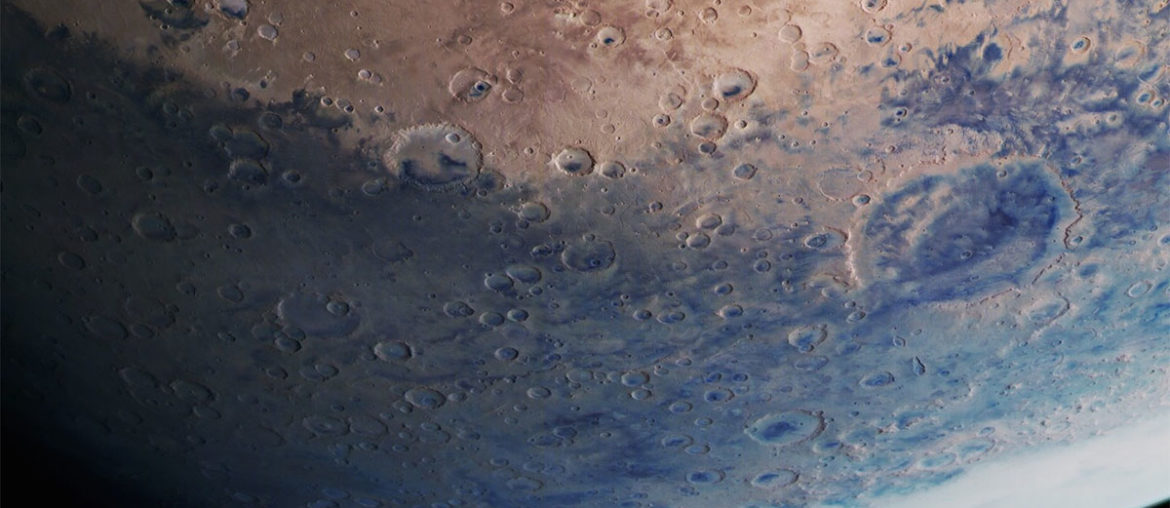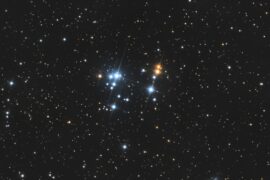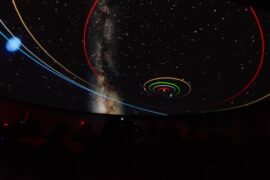Having the opportunity to look at the planets in our Solar System is one of the main reasons why someone might want to invest their hard-earned money in their first telescope.
Seeing another planet from your window or backyard is an experience that fills you with awe. It lets you experience the wonders of the universe and ignites your curiosity to learn more about how the cosmos works. A lot of scientists and people that end up in STEM fields started their careers as kids with a low powered telescope.
But not all telescopes are created equal. The technical specifications for your telescope will determine how far away you can see and the quality of the images.
It is hard to find the specific information on what exactly can you expect to see with any given telescope as they are all different. Even two telescopes with the same aperture and magnification can be different if they come from two different brands due to how well the lenses or mirrors have been polished and aligned.
In this guide, we will try to take the guesswork out of it and tell you exactly what planets you should be able to observe depending on the telescope you choose to get. Hopefully, this will help you make a more informed decision as sometimes the process of purchasing your first scope can be filled with questions and uncertainty.
First, let’s get some common questions out of the way.
Can you see planets outside the Solar System with a telescope?.
No. Home telescopes are simply not powerful enough to observe planets outside the Solar System. In fact, not even observatories can see planets directly as they don’t reflect enough light from their respective stars. The planets we know about are detected using advanced image processing techniques and some clever tricks. We go a bit more in-depth about this in the exoplanets section of this article.
Will I be able to see Pluto with a home telescope
Maybe. You will need a pretty powerful telescope and the right conditions, but it is possible.
Pluto is the farthest object in the Solar System that can be directly observed with your eyes. Objects beyond have been found, but they are detected using mathematical calculations. They don’t reflect enough light from the Sun for us to receive back here on Earth.
You will need a telescope with an aperture of at least 10 inches (254mm) and maybe wait a few months until Earth is in the optimal spot in its orbit, but it is possible to see Pluto.
What do telescope specifications mean?

The most intimidating thing when buying a telescope for the first time is the specifications. Aperture, magnification, focal length… and then there’s telescope types and other numbers that you don’t know how to interpret.
While all these can seem overwhelming, they are not that hard to understand once you learn a few rules.
If you are a bit familiarized with photography, the specs mean the exact same thing and will give you the same results as they would in a camera.
Here’s what each of them means listed in order of importance:
Aperture: The aperture is by far the most important number in your telescope. Some people believe it is really the only one that matters.
The aperture refers to the diameter of the frontal lens in your telescope. The one that is actually going to capture the light coming from space.
When it comes to aperture, the bigger the better. While there are differences between brands and types of telescopes, you will usually want to go with the larger aperture your budget can afford.
We have a whole guide dedicated to aperture in case you want to get into the details.
Magnification: The magnification is simply the relation between the focal length of the eyepiece and the focal length of your telescope (we explain focal length below, don’t worry about it for now).
In most modern telescopes, even amateur ones, the eyepieces are interchangeable so you can upgrade them with better ones. Because of this, the magnification your telescope starts with when you purchase it can be upgraded, with one important caveat.
Because the magnification also depends on the telescope’s focal length, there is a maximum useful number your telescope can reach. After this number, even if you use better, expensive eyepieces, you will not get a better image and you would just be throwing your money away.
To calculate the maximum useful magnification of your telescope, simply use this calculator.
Focal length: In layman terms, the focal length is the length of the telescope. It is the distance between the capture lens and the part where the image is formed to be sent to your eye.
Different from the aperture, that doesn’t mean larger is always better. Short focal lengths actually mean a wider field of view (the area of the sky you can see) so there’s a tradeoff in choosing one or the other. A longer focal length, however, will give you a bit more detail once you have located an object.
For hobbyist astronomers and kids, generally, a long focal length is recommended as you will mostly be looking at the Moon and planets and this will let you view more details in them. For the purpose of this guide focusing on planets, that is also true.
Visible planets by telescope aperture
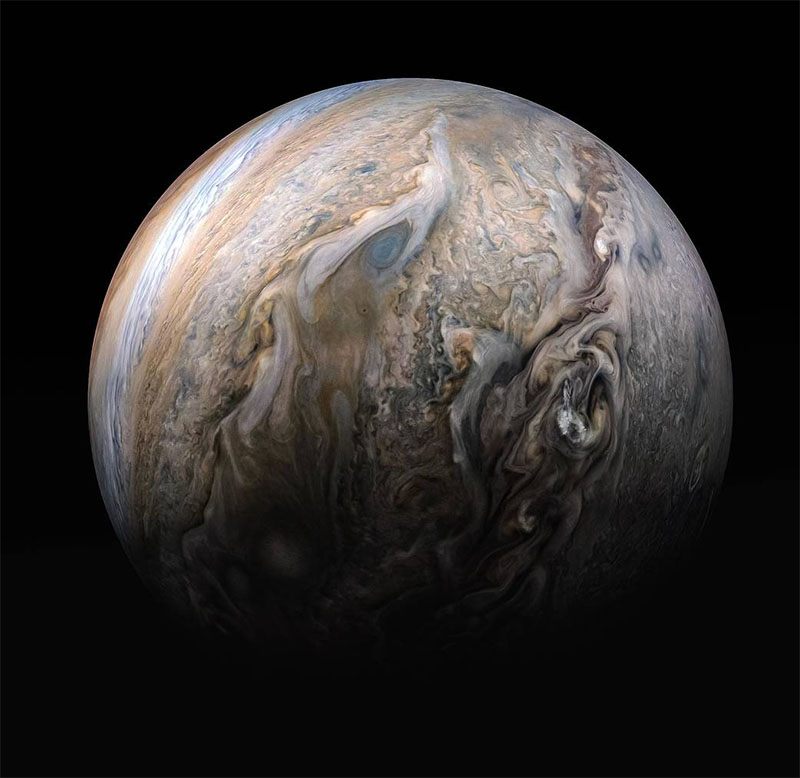
The following sections will feature handy tables that will allow you to check out what planets you can expect to see depending on the aperture of your telescope.
We are including the Moon and Pluto although they are not technically planets.
We are rating the visibility from 0 to 10. Also, please note we are assuming average light pollution and weather conditions. Your results might be better in a smaller town and worse in the middle of a big city.
A note about Mercury: While Mercury is closer to us than some of the other planets, it has a big problem when it comes to being visible from Earth. It is way too close to the Sun. This makes it hard to find as it is only visible a few days a year and only during short windows of time (dawn and dusk). Because of this reason, it is hard to get any detail out of even with powerful telescopes.
Planets visible with a 50mm telescope
50mm (2 in) telescopes are the most basic, entry-level, budget telescopes on the market. They are mostly targeted at kids and some of them could even fall into the toy category.
We generally don’t recommend 50mm telescopes unless you are on a very tight budget or you are looking for a gift for a 5-year-old. The minimum aperture we recommend for beginners is 70mm.
But if you do decide to get a 50mm telescope, here’s what you can expect:
| Planet | Visible | Detail level |
| Mercury | Yes | |
| Venus | Yes | Distinguishable phases |
| Moon | Yes | Major craters visible |
| Mars | Yes | |
| Jupiter | Yes | |
| Saturn | Yes | No rings |
| Uranus | No | |
| Neptune | No | |
| Pluto | No |
Planets visible with a 70mm telescope
This is the aperture we start to recommend for new astronomers and kids although you can go higher if your budget allows for it.
In this range, you will start to capture some extra details on the closer planets and the Moon will look great.
We have a more detailed article on 70mm telescopes if you want to check it out.
| Planet | Visible | Detail level |
| Mercury | Yes | |
| Venus | Yes | Distinguishable phases, maybe different shades |
| Moon | Yes | Great view of most of it geology |
| Mars | Yes | Visible poles |
| Jupiter | Yes | |
| Saturn | Yes | Slightly distinguishable rings |
| Uranus | Yes | Only a dot |
| Neptune | No | |
| Pluto | No |
Planets visible with a 100mm telescope
This is what we would call a mid-range amateur telescope. It is the first range where you would be able to see all planets, but don’t expect to see much detail yet beyond Jupiter.
100mm telescopes start to offer more features and possibilities. If you are serious about getting into astronomy it is a good range to get started.
We have some photos taken with 100mm telescopes in this article if you’d like to see what can you expect from a device in this category.
| Planet | Visible | Detail level |
| Mercury | Yes | |
| Venus | Yes | Distinguishable phases, some atmospheric changes |
| Moon | Yes | Perfect view |
| Mars | Yes | Visible poles and major features |
| Jupiter | Yes | Some recognizable details |
| Saturn | Yes | Visible rings |
| Uranus | Yes | Only a dot |
| Neptune | Yes | Only a dot, good viewing conditions necessary |
| Pluto | No |
Planets visible with a 130mm to 200mm telescope
This is the 5 inches to 8 inches range. You will mostly find Newtonian telescopes in this range as refractors start to become too expensive. The only thing that is going to vary in this range is the level of detail you will see on each planet, but they will definitely give you access to objects farther away in deep space such as nebulas.
If you want to get the best view out of the planets without breaking the bank, this is the range we would recommend.
| Planet | Visible | Detail level |
| Mercury | Yes | |
| Venus | Yes | Distinguishable phases, details |
| Moon | Yes | Perfect view |
| Mars | Yes | All major features |
| Jupiter | Yes | Major features, moons |
| Saturn | Yes | Visible rings, occasional moons |
| Uranus | Yes | Still mostly a dot |
| Neptune | Yes | Only a dot |
| Pluto | No |
Planets visible with a 250mm- 300mm telescopes
This is the higher end of consumer telescopes. Here you will find telescopes that are no longer practical to move around or travel with, but they’ll give you a great view of the planets.
To get a telescope in this range you will have to check out a store that specializes in telescopes or optical instruments as general stores don’t generally carry them or have a very limited selection.
As would be expected, this is also the most expensive range. Be prepared to spend a more serious amount of money if you are planning to go this route.
This isn’t really a range that we would recommend for a newcomer as you won’t really have the experience to get the most out of it. These are the kind of telescopes that you would get once you have been observing the sky for a few years and are ready to upgrade.
| Planet | Visible | Detail level |
| Mercury | Yes | |
| Venus | Yes | Distinguishable phases, details |
| Moon | Yes | Perfect view |
| Mars | Yes | All major features |
| Jupiter | Yes | Major features, moons |
| Saturn | Yes | Visible rings, moons |
| Uranus | Yes | Maybe some details |
| Neptune | Yes | Maybe a couple shade under perfect conditions |
| Pluto | Yes | Only a very hard to find dot |
What magnification is best to see planets
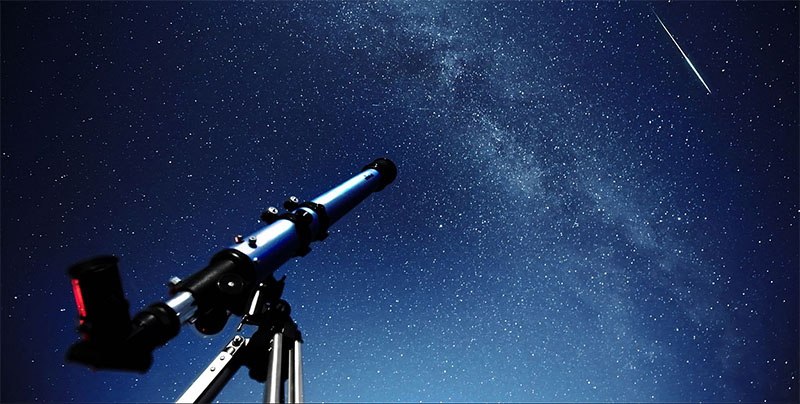
The magnification of a telescope is given by the following formula:
magnification = telescope focal length / eyepiece focal length
It is not possible to change the telescope’s focal length, however, by using different eyepieces (the little viewing devices at the end where your eye goes) you can play around with the variables and get a smaller or larger magnification.
A smaller magnification will allow you to view a bigger area of the sky, letting you see smaller objects and locate them faster. A larger magnification will get you more details out of the image. In large objects like planets, you can really tell the difference between one and the other.
There is a limit to how much you can push the magnification of a telescope. It is a point where the main lens of your telescope isn’t capturing any more light. When you reach that point, it doesn’t matter how much you try to increase your focal length, it won’t do much so it’s better to save your money and don’t spend on any eyepieces bigger than that.
This maximum useful magnification is determined by the aperture of the telescope. The rule of thumb to calculate this is to multiply the aperture by 50x.
That means that if you have a telescope with a 100mm aperture, you would calculate it by doing:
maxMag = 100 x 50 = 500
The max. useful magnification would be 500x.
General recommendations to choose a telescope to see planets
If your main objective when buying a telescope is to see planets, here are some general rules that will help when you select one.
- Start by choosing the biggest aperture your budget allows for.
- Pick the one with the larger focal length. This should all be listed on the specs page.
- Check the eyepieces the scope includes. If they don’t meet the maximum useful magnification, you might want to get one separately that does so you can get the highest possible level of detail.
Enjoyed this article?
Get daily 10-minute PDFs about astronomy to read before bed!
Sign up for our upcoming micro-learning service where you will learn something new about space and beyond every day while winding down.

